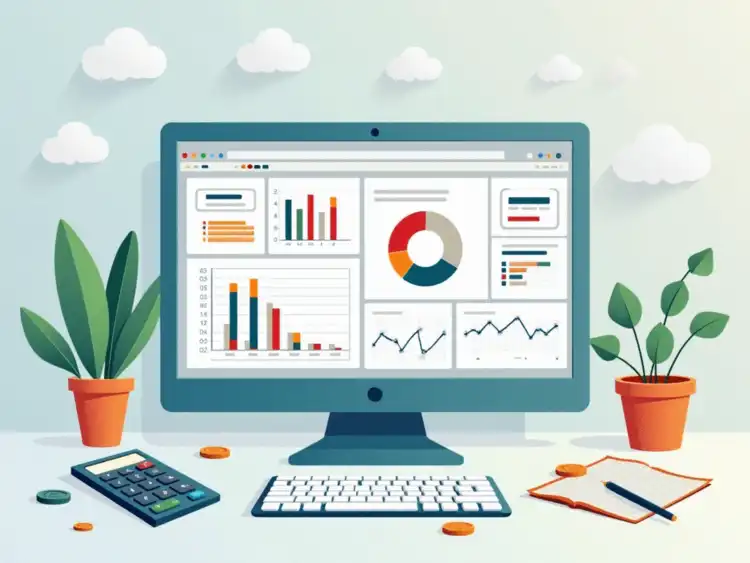
- Tutorials
- Svetlana Cheusheva
Have you ever wondered where all your money goes each month? Understanding your spending habits is the first step toward financial freedom. Tracking your expenses not only provides clarity but also empowers you to make better financial decisions.
Managing your finances can be daunting, but tracking your expenses is a crucial step toward financial health. By keeping a close eye on where your money goes, you can make informed decisions and avoid unnecessary spending. An effective way to do this is by creating a template in Excel that helps you organize and visualize your expenses.
When you track your expenses, you gain insights into your spending habits. This means you can identify areas where you might be overspending and adjust accordingly. Plus, having a clear overview of your finances can motivate you to stick to your budget and save for future goals!
Excel is a powerful tool for expense tracking due to its flexibility and ease of use. Here are some benefits of using Excel for this purpose:
By leveraging Excel's features, you can create a comprehensive expense tracking system that works for you. It's not just about tracking; it’s about understanding and improving your financial situation!
Before diving into creating your template, it's essential to outline what categories you'll need. Common categories might include:
Once you've identified your categories, you can start designing your Excel template. Think about what information you want to capture, such as the date, amount, and payment method. This will help you stay organized and make it easier to analyze your expenses later on!
Here's a brief recap of the key points discussed so far:
To keep your expense tracking accurate, it’s crucial to update your template regularly. I recommend establishing a routine where you input expenses daily or weekly. This simple habit ensures you don’t forget any purchases and helps maintain a clear view of your financial situation.
Creating a consistent schedule for entering expenses makes all the difference! Try setting aside time each week, such as Sunday evenings, for this task. A scheduled routine could help you stay on track and make it a part of your regular financial management practices.
To avoid missing any expenses, consider these tips:
Pivot tables are a powerful tool that can help you analyze your expenses more effectively. They allow you to summarize large amounts of data quickly, making it easier to spot trends and make informed decisions. Learning how to create a pivot table in Excel will take your expense tracking to the next level!
One great feature of pivot tables is the ability to create summary reports that show your spending trends over time. You can view how much you spend in different categories, making it easier to adjust your budget if necessary. This insight can be invaluable in keeping your finances on track!
Linking multiple sheets within your workbook can help you maintain a comprehensive overview of your finances. For instance, you can have separate sheets for monthly expenses, savings, and income. This method makes it easy to navigate between different aspects of your finances and see how they all connect!
When collaborating with others, you’ll want to make sure your expense template is easy to share. Excel allows you to export your template in various formats, like PDF or CSV, which can be handy for sharing. Just choose the format that works best for your audience!
If you're tracking expenses together with family or team members, sharing your template is essential. You can either send them the file directly or use cloud services for easy access. This way, everyone can contribute to tracking expenses and stay on the same page!
Using cloud-based tools like Google Sheets allows for real-time collaboration on your expense template. This feature means you and your family or team can update expenses simultaneously, ensuring everyone sees the latest information. Plus, it’s convenient to access from anywhere!
Keeping up with your expense tracking can lead to numerous benefits! Regular tracking helps you stick to your budget and promotes financial awareness. Over time, you’ll develop a better understanding of your spending habits, which can lead to smarter financial choices.
When you actively track your expenses, you’re more likely to achieve your financial goals. By monitoring your spending, you can see where to cut back and save more for things that matter. This focused approach makes it easier to reach milestones like saving for a vacation or paying off debt!
Your commitment to expense tracking can be an inspiration to those around you! Sharing your experience and encouraging friends or family to start tracking their expenses can lead to healthier financial habits for everyone. Together, you can create a supportive environment for better financial management.
Here is a quick recap of the important points discussed in the article:
Expense tracking is vital for managing finances, making informed decisions, and avoiding unnecessary spending. It allows you to gain insights into your spending habits and motivates you to stick to your budget.
Excel provides a flexible platform for creating customized expense templates. It also offers data analysis functions and visual tools, such as charts and graphs, to help you understand and manage your expenses effectively.
Common categories include Food and Dining, Housing, Transportation, Entertainment, and Utilities. Tailor your categories to fit your unique financial situation.
It's recommended to update your expense template regularly, ideally daily or weekly, to ensure accuracy and maintain a clear view of your financial situation.
Yes! You can easily share your Excel template via email or cloud services. This facilitates collaboration and ensures everyone involved can track expenses effectively.
